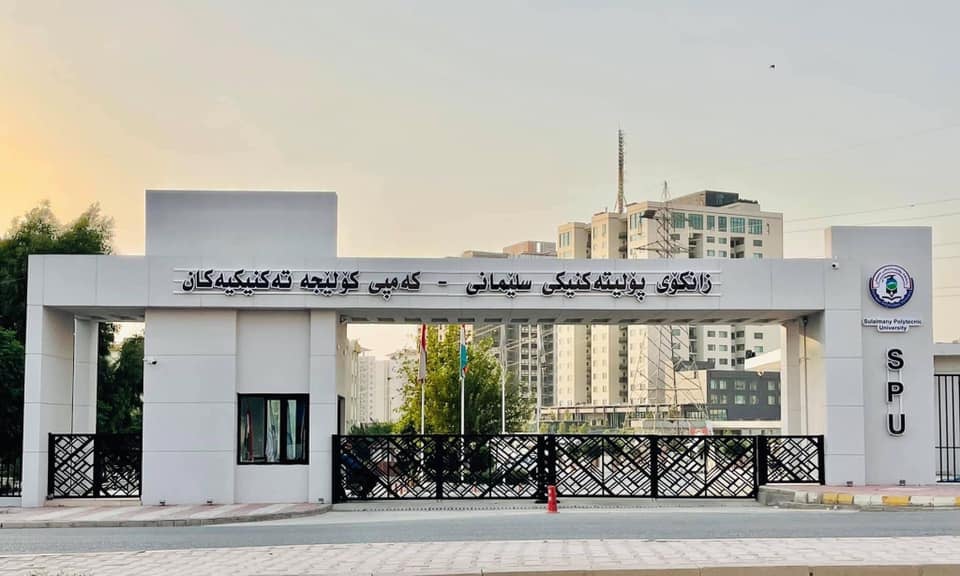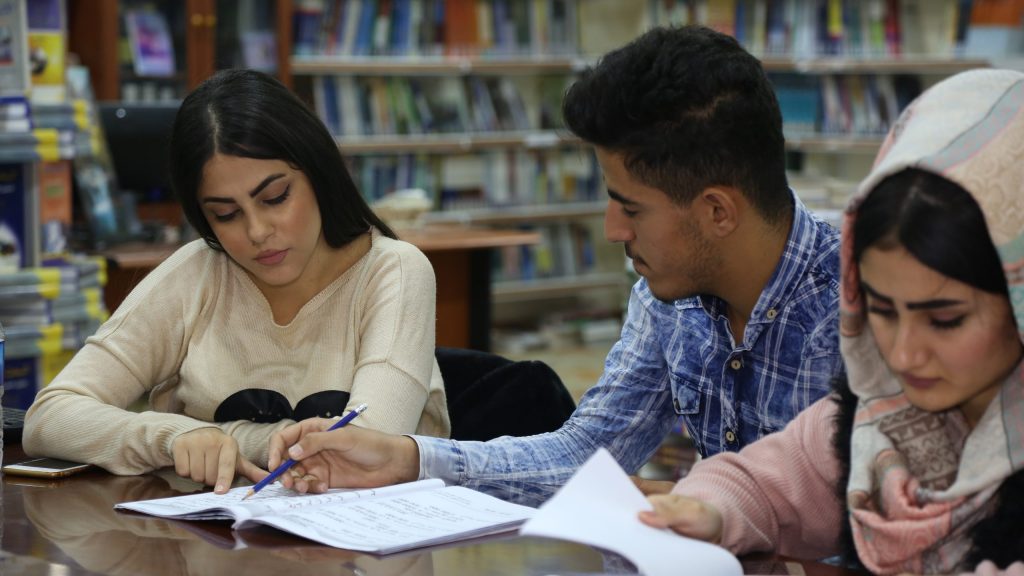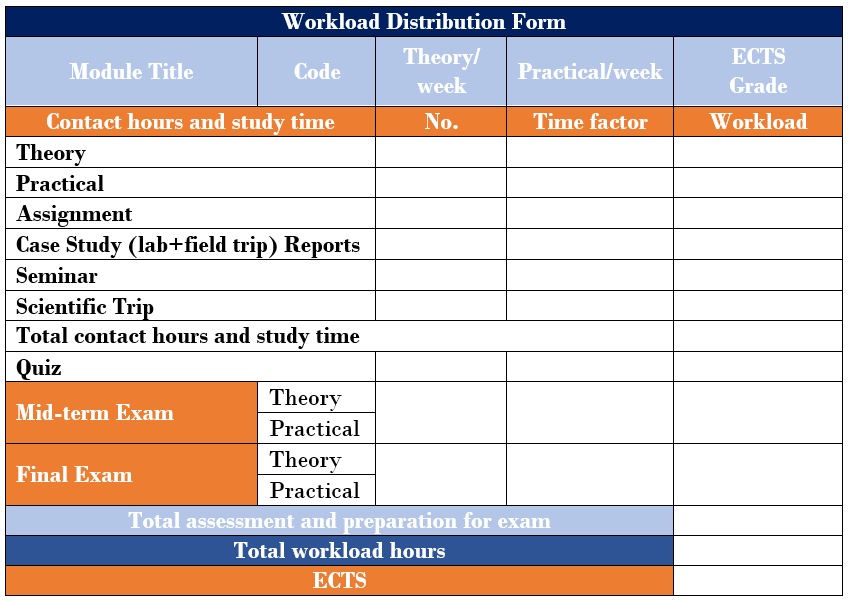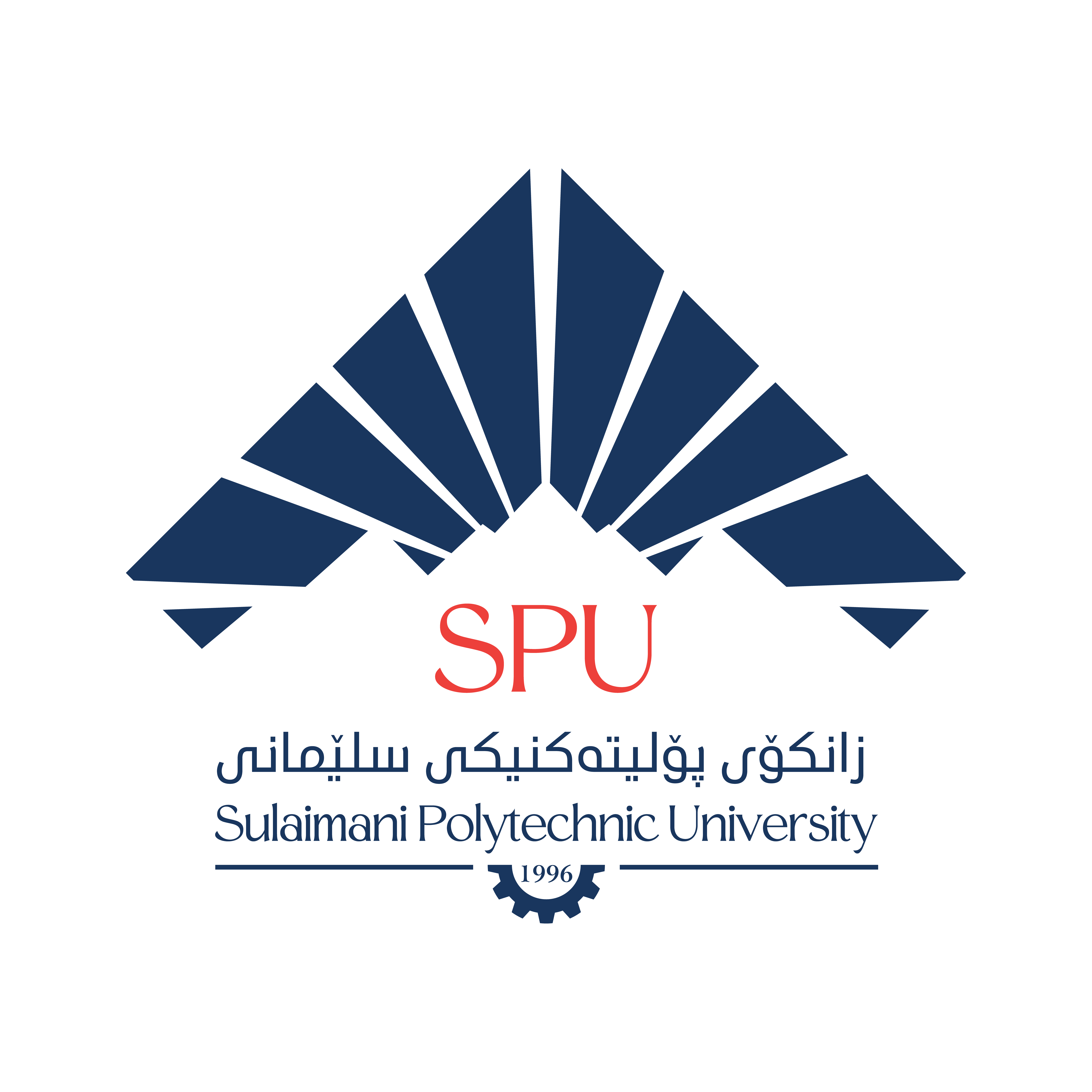Better Quality Brighter Future
SPU quality assurance commenced in 2010, referring to the quality of learning opportunities provided within University and the standards of the degrees awarded by SPU. Quality assurance includes the examination of the effectiveness and performance of colleges and institutions. As always, it has a significant role in sustaining and improving what higher education has achieved and building the future. The “best” includes the core values of academic freedom, institutional autonomy and social responsibility. Quality assurance has a history of buttressing and, at times, leading our commitment to these fundamental values. Today, quality assurance is essential in sustaining these core values as higher education faces the challenges of change and innovation. It is important even as we adopt new teaching and learning practices, develop new types of institutions, engage new education providers, and continue our commitment to expanding access and equity in higher education.

Contents
University Course Catalog
Welcome to the Academic Course Catalog of Sulaimani Polytechnic University. This Catalog serves as the primary resource for all information related to the University. It offers detailed insights into the University’s mission, institutional policies, academic programs, and more. Students are expected to familiarize themselves with the Catalog’s contents and adhere to its guidelines. Although the Catalog is updated regularly, students must follow the academic requirements outlined in the edition that was in effect when they first enrolled at Sulaimani Polytechnic University. The Catalog presents a wide array of course details in a consistent, easy-to-navigate online format that is both searchable and user-friendly.
Click here to view the university course catalog.
Student Feedback
Usually, in universities and colleges at any level, especially at the higher education level, lecturers are evaluated in terms of performance, methods, and other important issues for teaching. These evaluations happen occasionally and usually at the end of each academic semester.
Student feedback is the data collected from students about their university education experience. It can be verbal, written, or gestural and it is used by the quality assurance committee to implement future improvements over what is currently being done. The purpose of feedback in the assessment and learning process aims to improve a student’s performance. The advantages are that it can improve a student’s confidence, self-awareness, and enthusiasm for learning. In addition, effective feedback during the first year in university can aid the transition to higher education and may support student retention. Another benefit is that they can improve and implement better learning methods, such as improving their notes, making better summaries, and even studying groups. It is important to mention that there are different types of feedback. It can be conducted with the help of student feedback software. Student feedback software collects feedback from students on various aspects of education, including quality, relevance, teaching method, teachers, logistics, etc.
Continues Academic Development
To establishes and implement Continuous Academic Development in the universities and colleges, the Scientific Committees of these institutes and colleges laid down a robust programme. The faculties will implement this programme and monitor and observe it by the Scientific Committee. Each university faculty and teaching staff should lay down a programme periodically for the academic seminars. Moreover, at the start of the first semester, teachers publish a list of titles of seminars on their faculties’ websites. In order to encourage exchange visits, seminar presentations and networking among academics of different institutes in the Kurdistan Region, the schedule of the seminars will be published among the corresponding faculties.

Teacher's Portfolio
- Portfolios provide documented evidence of teaching from a various of sources (not just student feedback) and provide context for that evidence.
- The process of selecting and organizing material for a portfolio can help academic staff reflect on and improve teaching.
- Portfolios are a step toward a more public, professional view of teaching as a scholarly activity.
- Portfolios can look at development over time, helping academic staff see teaching as an ongoing process of inquiry, experimentation, and reflection.
- Teaching portfolios capture evidence of academic staff’s entire teaching career, in contrast to course portfolios that capture evidence related to a single course.
Curriculum Development
Curriculum development is the multi-step process of creating and improving a course taught at the University. While the process detail varies from institution to institution, the broad framework includes analysis, building, implementation, and evaluation stages. Curricula are often developed locally or nationally to achieve standardized learning outcomes across different institutions. Whereas at the college level, instructors may have more flexibility to develop curricula. Either way, the individual or group is responsible for planning a course (and choosing strong corresponding course materials) that effectively accomplishes educational goals and is commensurate with student needs.
Ideally, the curriculum development process should be a continuous improvement rather than a linear or stagnant approach. Plans for instruction should be frequently reviewed, amended, and updated as new and different needs arise. Modifications may be required when there are discoveries in subject-area, improvement in instructional best practices, or shifts in course delivery, such as the pivot to remote teaching.
What are the steps of curriculum development?
Depending on the approach that will be conducted, curriculum development can have many different steps. Generally, the phases in curriculum development will fall into a rough framework similar to many instructional design approaches. Each process resembles the following:
- Analysis
- Design
- Selecting
- Formation
- Review
Annual Course Monitoring (ACM)
- ACM actions are developed to improve student satisfaction and outcomes and must align with the university Learning and Teaching Quality and Standards Framework. The Academic Quality and Standards (AQS) team supports the ACM process.
- Annual Course Monitoring (ACM) triggers continual quality learning and teaching improvement strategies within the relevant course and/or College. ACM for Higher Education award and non-award courses generally commences in August/September, with notification being provided to the ACM Course Leader.
- The ACM Course Team reviews qualitative and quantitative data that identifies specific ACM actions per course each year.
Bologna Process
The initiative to create the European University Community and the European Higher Education Area has been proposed by the University of Bologna, the oldest University in Italy. In 1986, in preparation for its 900th anniversary, the University suggested that all European universities adopt the Magna Charta Universitarum, the Great Charter of Universities. In 1988, a document proclaiming the universal and eternal values of university education was signed by the rectors of 80 universities. On 14th April 2015, a workshop was organized by MHE-KRG under the auspices of the Minister of Higher Education and Scientific Research in cooperation with Dr. Lanazairina, the CEO of Cineca, and Sina Group. The workshop included defining the Bologna process, Quality Assessment, Documentation of Quality Assurance Data and National Ranking System, and ways of supporting Kurdistan universities to approach the Bologna Process and European standards. During 2018-2019, the system was applied in four colleges and two institutes of SPU. In the summer of 2000, a group of universities accepted the Bologna process collectively and designed a pilot project called “Tuning educational structures in Europe”. The group of participants was widened with the help of the European University Association and the national Conferences of Rectors. The European Commission requested a grant in the framework of the Socrates programme to support the project, which was granted in the winter of 2000- 2001. The Tuning project addresses several Bologna action lines and notably adopts an easily readable and comparable degree system. The adoption of a system is based on two cycles and credits. The Tuning project also contributes to realizing the other Bologna action lines.
In the framework of the Tuning project, a methodology has been designed to understand curricula and to make them comparable. Five lines of approach have been distinguished from organizing the discussions in the subject areas as follows:
- Generic (general academic) competences.
- Subject-specific competences.
- The role of ECTS as an accumulation system.
- Approaches to learning, teaching, and assessment.
- The role of quality enhancement in the educational process (emphasizing systems based on internal institutional quality culture).
It is necessary to consult with graduates, employers and academics on the importance of 30 generic competencies and evaluate how well higher education institutions develop them.
This includes (knowledge, understanding and skills) mapping of subject areas, the development of common reference points, and subject-specific competencies of each pilot discipline.
As a European credit accumulation system: new perspectives of the development of ECTS as a tool for programme design: its basis is student workload measured in time. Approaches to learning, teaching, and assessment and learning and assessment in different countries
The European Credit Transfer and Accumulation System (ECTS) is a European Higher Education Area tool for making studies and courses more transparent. Furthermore, it makes the mobility of students between countries possible and has their academic qualifications and study periods recognized internationally.
ECTS allows credits taken at one higher education institution to be counted towards a qualification studied for at another. ECTS credits represent learning based on defined learning outcomes and their associated workload.
ECTS enhances the flexibility of study programs for students. It also supports the planning, delivery and evaluation of higher education programs. It is a central tool in the Bologna Process, which aims to make national education systems more comparable internationally. ECTS also helps make other documents, such as the Diploma Supplement, clearer and easier to use in different countries. ECTS has been adopted by most of the countries in the European Higher Education Area as the national credit system and is increasingly used elsewhere.
ECTS is a learner-centered system for credit accumulation and transference based on the transparency of learning outcomes and processes. Its objective is to improve the quality of studies by facilitating the planning, delivery and evaluation of teaching and learning and recognizing qualifications and units of learning from different contexts. ECTS is widely used in higher education and applied to lifelong learning activities.
ECTS credits are based on the workload necessary for the student to achieve the defined learning outcomes. The achievement of learning outcomes has to be proven through assessment procedures based on clear and agreed criteria. They are expressed in whole numbers.
Learning outcomes describe what a learner is expected to know, understand and be able to do after the successful completion of a process of learning. They relate to level descriptors in national and European qualifications frameworks. The achievement of learning outcomes has to be proven through assessment procedures based on clear and agreed criteria.
The workload estimates the time students typically need to complete all learning activities (such as lectures, seminars, projects, practical work, individual study, and examinations) required to achieve the defined learning outcomes. The full-time workload of an academic year and the associated learning outcomes correspond to 60 credits. National legal provisions often formalise this. In most cases, the student workload ranges from 1,500 to 1,800 hours for an academic year, whereby one credit corresponds to 25 to 30 hours of work.
The allocation of credits is assigning some credits to qualifications, study programmes, or single educational components. Credits are allocated to entire qualifications or study programmes according to national requirements in line with national and/or European qualifications frameworks. They are allocated to educational components, such as course units, dissertation work and work placements, based on 60 credits per academic year, according to the workload required to achieve the defined learning outcomes for each component.
Awarding credits is formally granting learners the number of credits assigned to the qualification and/or its components. Credits are awarded to individual students after completing the learning activities required by the study programme and achieving the defined learning outcomes, as proven by appropriate assessment. In addition, if students have achieved learning outcomes in other learning contexts or timeframes (formal, non-formal, or informal), credits may be awarded through assessment and recognition of these learning outcomes.
Accumulation of credits is the process of collecting credits awarded to achieve the learning outcomes of educational components or other learning activities. Credits may be accumulated by an individual student with a view to:
- Obtain qualifications, as required by the degree-awarding institution
- Document personal achievements for lifelong purposes
Transfer of credits is the process of having the credits awarded in one formal context recognised in another for obtaining a qualification. For example, credits awarded to a student in one programme may be transferred by an institution to be accumulated in another programme, offered by the same or another institution. This transference can only occur if the degree-awarding institution recognises the learning outcomes and associated credits. Credit transfer is the key to successful student mobility. Agreements among institutions, departments, and programmes facilitate automatic recognition and transfer of credits.
The use of ECTS credits is facilitated by the ECTS key documents (Course Catalogue, Learning Agreement and Transcript of Records). ECTS also contributes to transparency in other documents like the Diploma Supplement.
Differences between national higher education systems can lead to concerns about the recognition of qualifications and mobility periods abroad. This issue is addressed in part by enhancing the comprehension of the learning outcomes and workload of programmes of study.
ECTS also makes it possible to blend different learning styles, such as university and work-based learning, within the same programme of study or through lifelong learning.
60 ECTS credits are the equivalent of a full year of study or work. These credits are usually broken down into several smaller modules in a standard academic year. For example, a typical ‘short cycle qualification’ typically includes 120 ECTS credits. A ‘first cycle’ (or bachelor’s) degree consists of either 240 ECTS credits.
Usually, a ‘second cycle’ (or master’s) degree usually equates to 120 ECTS credits. However, the use of the ECTS at the “third cycle,” or Ph.D. level, varies.
ECTS is applied to support student mobility between higher education institutions. The course catalogues, Learning Agreements and Transcripts of Records help recognize and transfer credits earned by students during a mobility period abroad.
Student Workload
The workload estimates the time that the individual typically needs to complete all learning activities such as lectures, seminars, projects, practical work, and work placements. The correspondence of the full-time workload of an academic year to 60 credits is often formalised by national legal provisions. In most cases, the workload is 1,500 hours for an academic year, meaning one credit corresponds to 25 hours of work.

How to calculate workload hours?
To make sure thar students have enough time to learn, it is important to list all activities involved in the course. The course leader should have an idea of the time required to complete each learning activity. In addition, allocating time for reading the curriculum, exam preparation and time for lectures, seminars, labs, etc., should be considered when calculating workload. Each activity should therefore include enough time for deep and effective learning where students have time to understand the underlying principles, integrate the learning with previously acquired knowledge, and hold a holistic view of the subject. However, insufficient time for the activities may lead to surface learning, where students only have time to memorize facts and data and reproduces the bare minimum needed for an assessment. The workload hours are calculated by multiplying each module’s credit number by 25, as one credit equals 25 hours of study
Example: The workload estimates the time that the individual typically needs to complete all learning activities such as lectures, seminars, projects, practical work, and work placements. The correspondence of the full-time workload of an academic year to 60 credits is often formalised by national legal provisions. In most cases, the workload is 1,500 hours for an academic year, meaning one credit corresponds to 25 hours of work.

Directorate of Curriculum Development and Quality Assurance
Director: Lecturer. Shara Salih Ali
Address: Presidency of Sulaimani Polytechnic University, 3rd floor\ Wrme Street 327/76, Qrga, Sulaymaniyah, Kurdistan, Iraq
P.O. Box: 70-236
Email: qa-curriculum@spu.edu.iq
